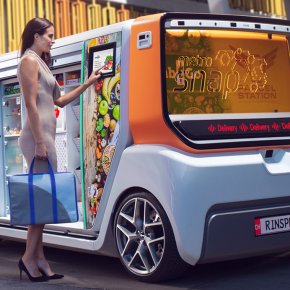

MBSE
Model Based Systems Engineering
The key to digitalization
It doesn't matter whether you are talking about Industry 4.0 or IoT (Internet of Things): At the end of the day, it's the right products or services that count, which are useful or make sense to the end customer.
Unfortunately, it is not enough to write down all the features and functions of the new digital product world on a white sheet of paper. Rather, we should rack our brains over the way in which the individual features are put on the road - because that is the real challenge. In other words, it's about the development process itself. It is the process that turns into what is widely referred to - or should be referred to - as digitalization.
The complexity lies in the development, so that the product can be simple
Just looking at the complexity of today's driver assistance systems can make you dizzy. Interlocking functions, dependencies that could fill entire books, variants that must be adapted individually for each country or even city. And we're not even talking about the future. A future in which we drive autonomously. A future in which the system "somehow" learns by itself and at the same time is supposed to be even safer than all the vehicles before it. And in which we live in a completely networked ecosystem, from the domestic toaster to the favored vehicle sharing provider to the intelligent parking garage. However, if we look at the development process of today's automotive companies, we have to conclude: Nothing scales anymore!
Behind Model-Based System Development is the approach to represent the digital twin of a product. By means of itsown system language, which can be wonderfully visualized and is understood by both man and machine. The model can be used over the entire product life cycle and is the basis for further development and the collaboration platform for all engineers, software developers and project managers involved. In practice, it is much more than that, because this model already represents the functionality that the future product will have.
The advantages of model-based system development are not only in the product quality, but also in the economic efficiency. Contents of the model are reusable. If a new vehicle derivative is to be created, requirements, architectures and test cases, for example, can be transferred from another model. Adjustments are specifically located where the new vehicle derivative differs. Since all parts of the model are networked with each other, the resulting customer function can be traced back to the original, specially formulated requirement. This procedure automatically extracts the specifications at the push of a button.
In A Nutshell
- Model-based requirements and architecture development
- Modeling as a Service
- Functional, logical and physical architecture development
- Process analysis
- SysML
- PREEVision

Agile, agile and agile
In modern development processes, agility is considered to be a good thing. MBSE is also an important ingredient here, because a complete model can be seen as an enabler for large Scrum projects. This is the only way to integrate the many disciplines involved in development, from car body to IT hardware to software. And the further we look at the entire mobility ecosystem, the clearer it becomes that MBSE can be a key in the interaction with external, third-party services. Along a digital user journey, the product to be developed is only one building block. Parking space reservations, continuing the journey on a sharing scooter or using popular streaming services while on the move are developed and operated by other companies or start-ups. They can be integrated into the product model as a black box without having to reveal the development secrets of other companies. It is not necessary to understand the actual contents of the black box, you just need to understand how it behaves and which errors could be derived from it.
Wanted: Experts from A to Z
If one wants to be prepared for the digital future through digital product development, MBSE must be anchored in the company in the form of tools, methods and processes. It is not enough to specialize in advising on methods, or to be strong only in implementation, says Cognizant Mobility MBSE expert Christiane Bertram. Rather, the Cognizant Mobility MBSE TEAM has built up a tried-and-tested framework over the course of many projects, which is designed to lead companies more quickly onto the path of this new development paradigm. It contains not only MBSE know-how and training measures, but also the necessary skills set for the individual adaptation of the required requirements management and modelling systems. Embedded know-how, experts in software development and the necessary automotive and mobility industry knowledge round off the package. Cognizant Mobility is also working on methods for training artificial intelligence, both to support the creation of system models with suggestions and to carry out error analyses of the model.
- Requirements management
- System Architecture Design
- Functional Safety ISO 26262
- Model-based testing
- IBM Doors, Codebeamer, PTC Integrity
- Cameo Systems Modeler, Enterprise Architect
- Simulation/Stateflow, Matlab/Simulink, Dymola
In quick steps we develop a powerful system model based on your requirements documents and specifications.


